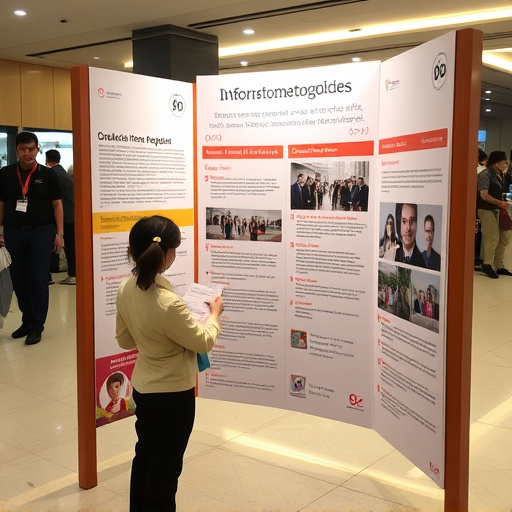Cold air intake (CAI) systems significantly enhance engine performance by redirecting cold, dense air into the engine. Performance testing involves advanced methodologies in controlled environments, measuring air temperature, pressure, and flow rate to compare with standard systems. Dynamometer tests assess power and torque outputs, providing concrete data on gains. This scientific approach includes hypothesis formulation, specialized equipment for key parameter quantification, and data analysis using statistical methods. The rigorous methodology ensures accurate, repeatable results, aiding in optimizing CAI design for enhanced power, torque, and fuel efficiency.
“Unleash optimal engine performance with a scientific approach to cold air intake (CAI) performance testing. This comprehensive guide delves into the intricate world of CAI systems, their impact on engine health, and the methodologies behind rigorous testing.
From understanding the fundamentals of cold air intake performance testing methodology to deciphering data analysis, we’ll explore the scientific process step-by-step. Uncover how these systems enhance power output while ensuring a structured approach for effective evaluation.”
- Understanding Cold Air Intake Systems and Their Impact on Engine Performance
- The Scientific Methodology for Testing Cold Air Intake Performance
- Data Analysis and Interpretation in Cold Air Intake Performance Testing
Understanding Cold Air Intake Systems and Their Impact on Engine Performance

Cold Air Intake (CAI) systems are an integral part of many vehicle’s engineering, designed to enhance engine performance by optimizing air delivery. This involves redirecting a significant amount of cold, dense air from outside the vehicle into the engine’s intake manifold. The impact on performance is substantial; colder air is denser, allowing for more efficient combustion and increased power output.
Testing the performance of CAI systems requires a scientific approach leveraging advanced methodologies. This includes controlled environments where variables such as air temperature, pressure, and flow rate are meticulously measured. By comparing these metrics with standard intake systems, researchers can quantify the improvements offered by CAI. Additionally, dynamometer tests assess the engine’s power and torque outputs, providing concrete data on performance gains. These scientific methods ensure that any claimed benefits of a CAI system are accurately evaluated, benefitting both consumers and automotive engineers seeking to optimize vehicle dynamics.
The Scientific Methodology for Testing Cold Air Intake Performance

The scientific approach to testing cold air intake (CAI) performance involves a meticulous methodology designed to gather accurate and repeatable data. It begins with the formulation of a hypothesis, where researchers or engineers propose specific improvements or changes in CAI design and their expected impact on engine performance. This is followed by the selection of appropriate test equipment, such as flow meters, pressure sensors, and temperature probes, to quantify key parameters like air flow rate, pressure drop, and temperature rise.
Testing protocols are then established, encompassing various scenarios and conditions to ensure comprehensive evaluation. These may include testing at different engine speeds, loads, and ambient temperatures. Data acquisition software records measurements during each test run, allowing for detailed analysis post-experiment. The collected data is meticulously analyzed using statistical methods and engineering principles to validate or refute the initial hypothesis, providing insights into the optimal CAI design and performance enhancements.
Data Analysis and Interpretation in Cold Air Intake Performance Testing

During cold air intake performance testing, data analysis and interpretation are paramount to understanding and optimizing engine performance. The process involves meticulously examining various metrics collected during the test, such as air flow rates, pressure differentials, and temperature readings, using advanced analytical tools and techniques. By applying statistical methods and trend analysis, engineers can identify patterns, correlations, and anomalies that may indicate areas for improvement in the cold air intake system. This data-driven approach enables them to make informed decisions about design modifications, ensuring that adjustments are both effective and efficient.
Interpretation of these data points requires a deep understanding of engine dynamics and airflow principles. Engineers must consider factors like atmospheric conditions, engine load, and exhaust gas temperature to accurately attribute changes in performance to the cold air intake system. This nuanced interpretation allows for the fine-tuning of components like air filters, intake manifolds, and valves, leading to enhanced engine power, torque, and fuel efficiency. The scientific approach to data analysis and interpretation in cold air intake performance testing is thus a key driver in achieving optimal engine performance and overall vehicle efficiency.
In conclusion, a scientific approach to testing cold air intake (CAI) systems is paramount for understanding their impact on engine performance. By employing rigorous methodologies, data analysis, and interpretation, we can gain valuable insights into CAI performance testing. This not only enhances our knowledge of engine optimization but also enables us to make informed decisions when selecting or designing CAI systems for various applications. The key lies in adhering to a structured process that incorporates both theoretical understanding and experimental validation, ultimately revolutionizing how we approach engine tuning and performance enhancement.














